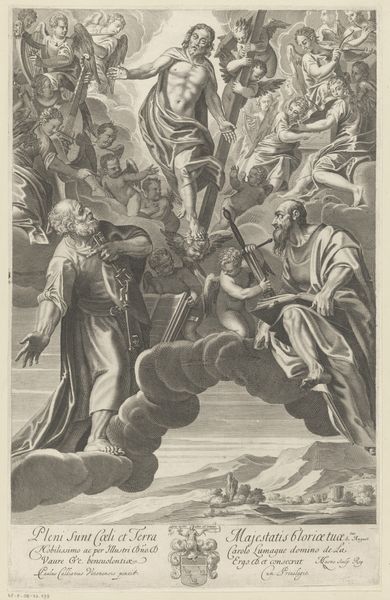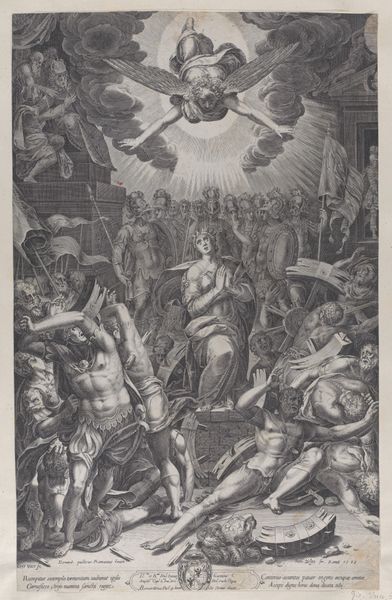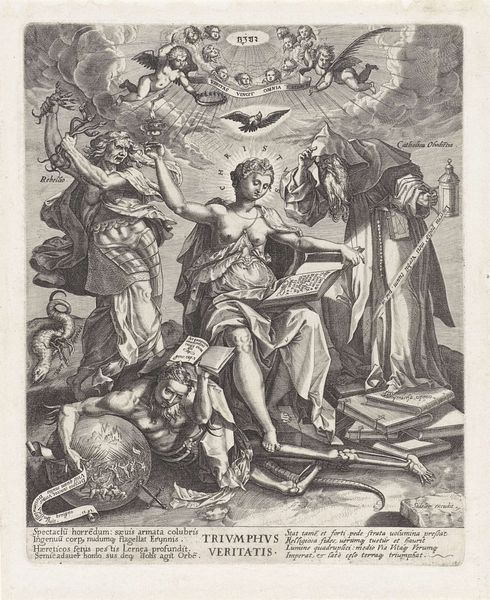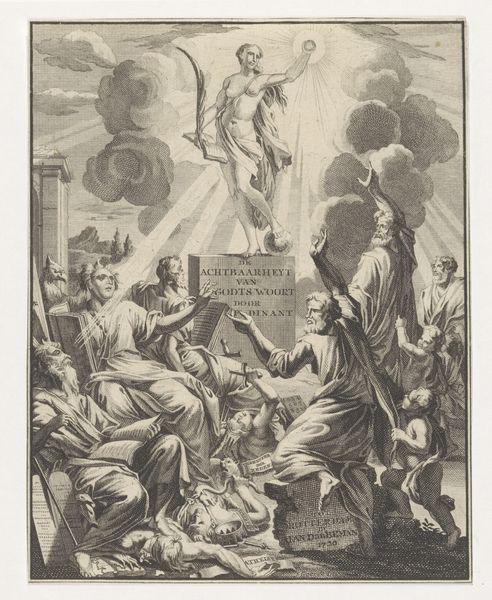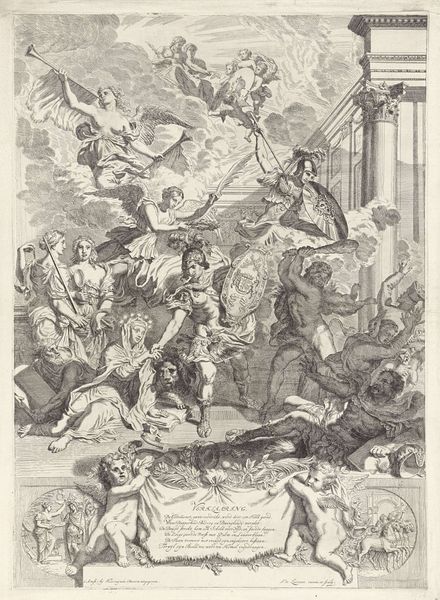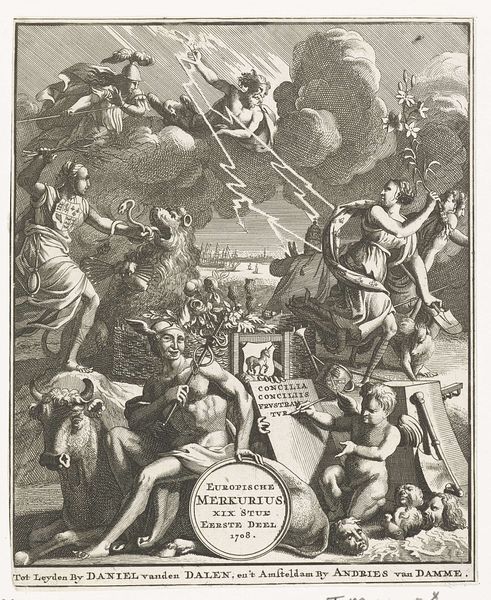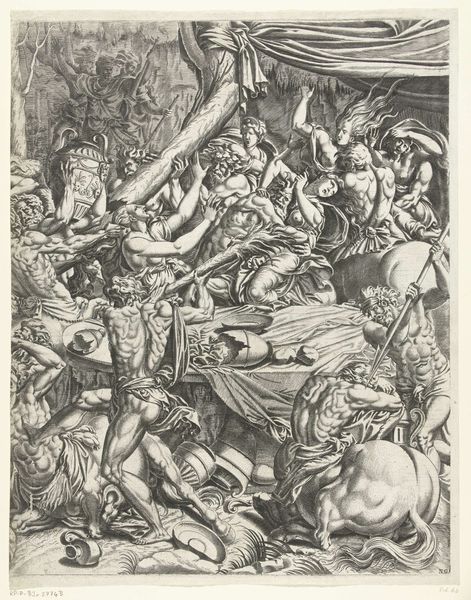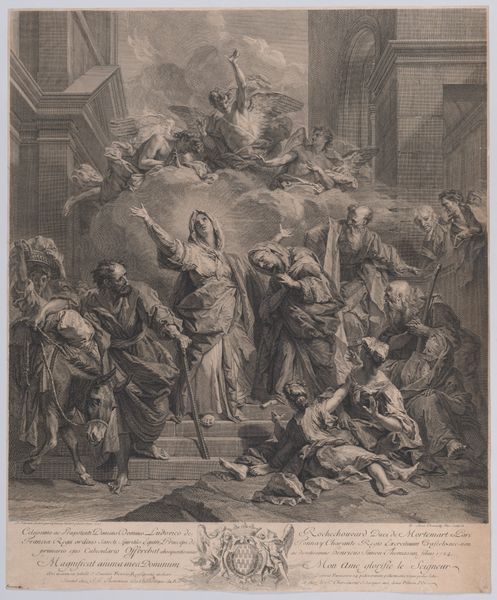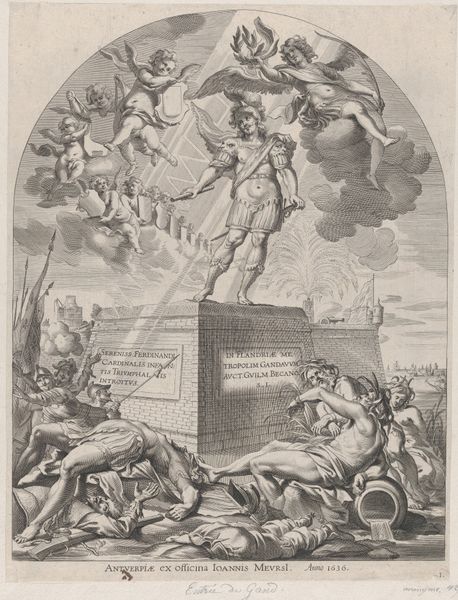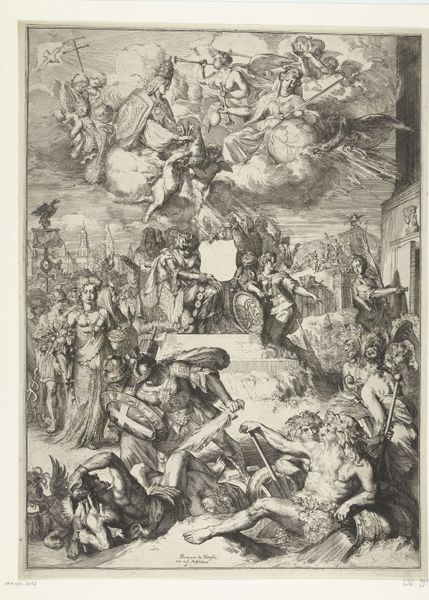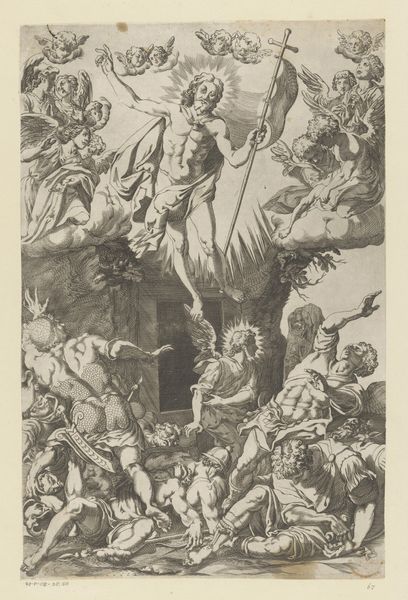
Allegory on the Death of the Earl of Arundel 1641 - 1651
0:00
0:00
drawing, print, engraving
#
portrait
#
drawing
#
allegory
#
baroque
# print
#
death
#
human-figures
#
history-painting
#
engraving
Dimensions: Plate: 17 × 12 5/8 in. (43.2 × 32 cm) Sheet: 17 3/16 × 12 5/8 in. (43.7 × 32 cm)
Copyright: Public Domain
Wenceslaus Hollar made this print, “Allegory on the Death of the Earl of Arundel,” using etching. Etching is an intaglio printmaking process where lines are incised into a metal plate with acid, creating an image that can be reproduced. Think about the labor involved in this process. The artist covers a metal plate with a waxy, acid-resistant coating. Then, using a sharp needle, they scratch away the coating to expose the metal underneath. The plate is then immersed in acid, which bites into the exposed metal, creating recessed lines. The longer the plate sits in the acid, the deeper the lines become, affecting how much ink they hold. To make the print, ink is applied to the plate, filling the etched lines. The surface is wiped clean, and a sheet of paper is pressed firmly against the plate, transferring the ink from the recesses to the paper. The resulting print is a mirror image of the original design. Hollar was a master of this exacting process, which was crucial to disseminating images in his time. It allowed for the relatively quick and inexpensive reproduction of designs, making art accessible to a wider audience. Through this print, Hollar used the reproducibility of the medium to commemorate the Earl, further cementing the importance of his legacy.
Comments
No comments
Be the first to comment and join the conversation on the ultimate creative platform.
